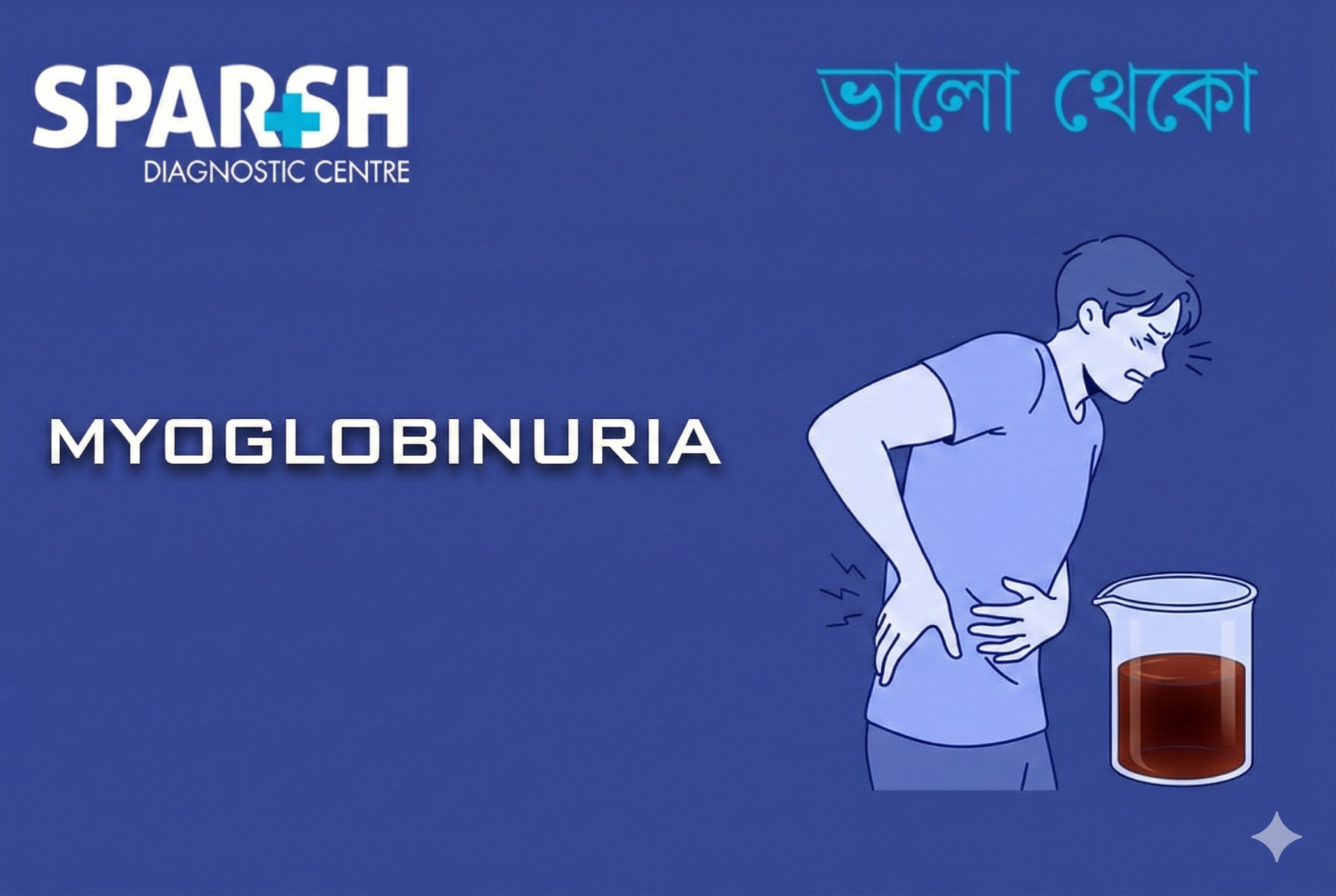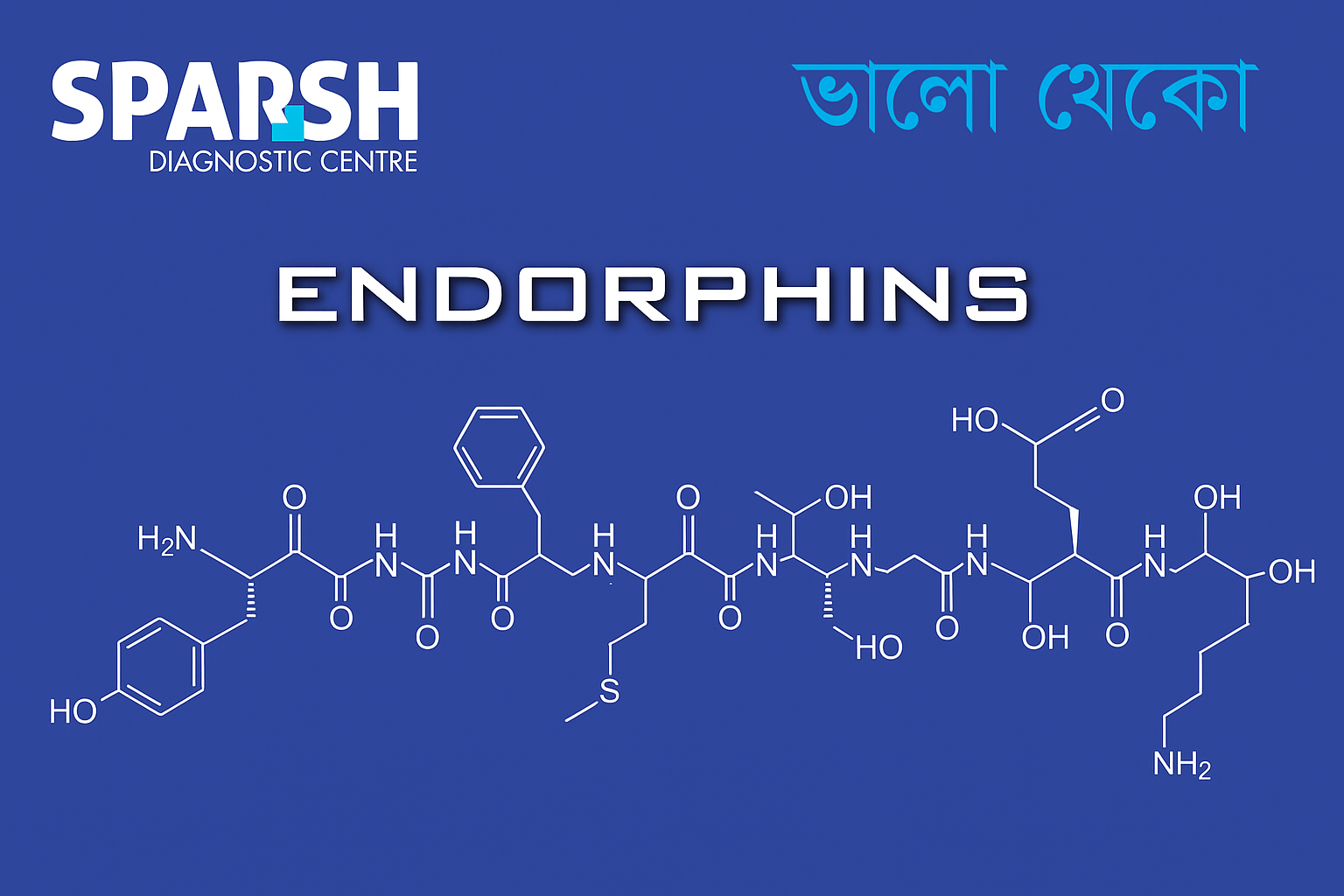Myoglobinuria is a medical condition characterized by the presence of myoglobin, a muscle protein, in the urine. Myoglobin normally resides inside muscle cells and helps store oxygen. However, when muscle tissue undergoes damage due to trauma, strenuous exercise, toxins, medications, or metabolic disorders, myoglobin leaks into the bloodstream and is filtered by the kidneys. This overflow spills into the urine, giving it a distinctive dark red, cola-brown, or tea-colored appearance.
Although it may appear harmless at first glance, myoglobinuria can be a sign of a serious underlying condition called rhabdomyolysis—a potentially life-threatening disorder that causes widespread muscle breakdown. If not treated in time, excess myoglobin can cause acute kidney injury, electrolyte disturbances, and multi-organ complications.
This comprehensive guide explains the causes, symptoms, diagnostic methods, treatment approaches, and prevention strategies for myoglobinuria.
What Is Myoglobin and Why Does It Appear in Urine?
Myoglobin is a heme-containing protein found in skeletal and cardiac muscle. It binds oxygen and supplies it to muscle cells during activity. Under normal conditions, myoglobin remains inside muscle fibers and is not detectable in the bloodstream.
When muscle injury occurs, myoglobin is released rapidly into the circulation. The kidneys filter it, but when levels exceed a threshold, it spills into the urine, leading to myoglobinuria.
Notably:
Myoglobin is nephrotoxic, meaning it can damage kidney tissue.
It breaks down into compounds that obstruct kidney tubules.
It can cause oxidative injury inside the kidney.
Severe cases lead to acute renal failure.
Causes of Myoglobinuria
Myoglobinuria may result from a wide range of conditions that cause muscle breakdown. These causes are generally grouped into the following categories:
1. Traumatic Causes
These involve direct injury to muscles:
Crush injuries
Road accidents
Severe falls
Electric shock
Prolonged immobilization (e.g., unconsciousness after overdose)
2. Non-Traumatic (Medical) Causes
These are commonly associated with muscle breakdown without direct injury.
a. Strenuous Exercise
High-intensity workouts such as:
Long-distance running
CrossFit
Weightlifting
Military drills
Unaccustomed vigorous exercise
These may cause exertional rhabdomyolysis.
b. Infections
Certain infections can trigger muscle injury:
Viral: Influenza, HIV, Epstein-Barr virus
Bacterial: Salmonella, Streptococcus
Parasitic: Malaria
c. Medications and Drugs
Several drugs can lead to muscle breakdown, including:
Statins
Fibrates
Antipsychotics
Cocaine
Alcohol
Heroin
Amphetamines
Certain anesthetics (malignant hyperthermia)
d. Toxins
Poisoning with:
Snake venom
Alcohol
Carbon monoxide
Heavy metals
e. Electrolyte Imbalance
Conditions like:
Hypophosphatemia
can impair muscle function and trigger breakdown.
f. Metabolic & Genetic Disorders
Inherited muscle enzyme deficiencies:
Carnitine palmitoyltransferase deficiency
McArdle disease
Mitochondrial myopathies
These conditions impair energy production in muscles.
g. Hyperthermia
Overheating the body can damage muscle tissues:
Severe fever
Malignant hyperthermia (reaction to anesthesia)
h. Autoimmune Muscle Diseases
Such as:
Immune-mediated necrotizing myopathy
Symptoms of Myoglobinuria
The most characteristic sign of myoglobinuria is dark-colored urine. However, this alone isn’t enough for diagnosis, because it may resemble hematuria (blood in urine). Associated symptoms provide better clarity:
1. Muscle Symptoms
Muscle swelling
Stiffness
Weakness or difficulty moving
Tenderness to touch
2. Urinary Symptoms
Dark brown or tea-colored urine
Reduced urination (oliguria)
Pain during urination (less common)
3. Systemic Symptoms
Confusion in severe cases
Electrolyte imbalance symptoms (irregular heartbeat, muscle spasms)
If kidney function begins to decline, symptoms like swelling of feet, shortness of breath, and decreased urine output become more prominent.
Complications of Myoglobinuria
The most serious risks associated with untreated myoglobinuria include:
1. Acute Kidney Injury (AKI)
Myoglobin blocks kidney tubules and disrupts urine flow, causing kidney damage. Severe cases may lead to complete kidney failure requiring dialysis.
2. Electrolyte Imbalance
High phosphate levels
These imbalances can cause heart rhythm disturbances and muscle dysfunction.
3. Compartment Syndrome
In severe muscle injury, pressure builds up within muscle compartments, causing tissue necrosis.
4. Disseminated Intravascular Coagulation (DIC)
Massive muscle injury can cause widespread clotting inside blood vessels.
5. Cardiac Arrhythmias
Imbalances in potassium and calcium can lead to life-threatening heart rhythm abnormalities.
Diagnosis of Myoglobinuria
Diagnosing myoglobinuria involves clinical evaluation and laboratory investigations.
1. Physical Examination
The doctor assesses:
Muscle tenderness
Swelling
History of trauma
Exercise patterns
Drug or medication use
2. Urine Tests
Urinalysis: Detects myoglobin presence
Urine color: Dark brown or tea-colored
Dipstick test: Positive for blood but no red blood cells under microscope, indicating myoglobin rather than hemoglobin
3. Blood Tests
These tests help confirm muscle breakdown and assess kidney function:
Creatine kinase (CK): Usually 5–100 times higher than normal
Serum myoglobin
Electrolyte levels
4. Imaging
Ultrasound or MRI may be used to evaluate muscle injury or kidney status in some cases.
Treatment of Myoglobinuria
Early and aggressive treatment is crucial to prevent kidney failure and systemic complications.
1. Hospitalization
Moderate to severe cases require hospital admission for monitoring and treatment.
2. Intravenous (IV) Fluids
High-volume IV fluids help:
Flush myoglobin from the kidneys
Maintain urine output
Prevent kidney obstruction
This is the primary treatment for rhabdomyolysis-induced myoglobinuria.
3. Electrolyte Correction
Abnormal electrolyte levels are corrected with medications and monitoring.
Treating hyperkalemia is crucial to prevent cardiac arrest.
4. Alkalinization of Urine
Sodium bicarbonate may be used to raise urine pH, which prevents myoglobin from precipitating in the kidneys.
5. Diuretics
In selected cases, medications like mannitol may be used to increase urine output, but only under medical supervision.
6. Dialysis
Required if:
AKI progresses
Severe electrolyte abnormalities develop
Urine output fails to improve
7. Treating Underlying Causes
Discontinuing triggering drugs
Managing infections
Treating autoimmune diseases
Controlling metabolic disorders
Prevention of Myoglobinuria
1. Stay Hydrated
Adequate hydration before, during, and after strenuous exercise helps reduce the risk of muscle breakdown.
2. Gradually Increase Exercise Intensity
Avoid sudden increase in workout intensity.
3. Avoid Drug Abuse
Illicit drugs and excessive alcohol intake significantly increase the risk.
4. Monitor Medications
If you are on statins or similar drugs, consult your doctor if you experience muscle pain.
5. Manage Chronic Conditions
Keep metabolic and endocrine disorders under control.
6. Avoid Extreme Heat Exposure
Exercise during cooler hours and stay hydrated.
7. Treat Infections Promptly
Some viral and bacterial infections can trigger muscle injury.
When to See a Doctor
Seek immediate medical attention if you notice:
Persistent dark-colored urine
Severe muscle pain after exercise
Reduced urine output
Swelling of legs or face
Fever with muscle weakness
Early diagnosis and treatment can prevent dangerous complications, especially kidney failure.
Frequently Asked Questions (FAQ)
1. Is myoglobinuria the same as hematuria?
No. Hematuria is the presence of blood (red blood cells) in urine, while myoglobinuria is the presence of myoglobin. They may look similar visually but are different conditions.
2. What does urine look like in myoglobinuria?
It usually appears dark red, tea-colored, or cola-brown.
3. Is myoglobinuria reversible?
Yes, in most cases, especially when treated early. However, untreated cases can lead to permanent kidney damage.
4. What is the most common cause of myoglobinuria?
Rhabdomyolysis—muscle breakdown caused by exercise, trauma, medications, or metabolic disorders—is the most common cause.
5. Can dehydration cause myoglobinuria?
Dehydration alone may not cause it, but it significantly increases the risk during strenuous exercise or muscle stress.
6. How is myoglobinuria confirmed?
Urinalysis, serum myoglobin levels, and elevated creatine kinase levels help confirm the diagnosis.
7. Can children get myoglobinuria?
Yes. It can occur due to viral infections, metabolic disorders, or muscle injuries.
8. How long does myoglobin stay in urine?
Myoglobin typically clears within 24–72 hours once muscle injury stops and treatment begins.
9. Is exercise-induced myoglobinuria dangerous?
In mild cases, it resolves, but severe muscle breakdown can lead to kidney damage and requires medical care.
10. What foods or supplements help prevent muscle breakdown?
A well-balanced diet rich in protein, electrolytes, and antioxidants helps maintain muscle health, but prevention mainly depends on hydration and proper exercise habits.
Myoglobinuria is a warning sign that the muscles have undergone significant injury. While mild cases may resolve with rest and hydration, severe cases—particularly those linked to rhabdomyolysis—can lead to kidney failure and life-threatening complications. Recognizing symptoms early, seeking medical care promptly, and addressing underlying causes are essential steps toward effective recovery.
Whether caused by intense exercise, trauma, infections, or medications, timely diagnosis and treatment significantly improve outcomes. Maintaining hydration, avoiding drug abuse, and exercising safely can greatly reduce the risk of developing myoglobinuria.
If you observe dark-colored urine or persistent muscle pain, consult a healthcare professional immediately.
#BhaloTheko
Disclaimer:
No content on this site, regardless of date, should ever be used as a substitute for direct medical advice from your doctor or other qualified clinician.

Sparsh Doctor List
![]()






[…] Myoglobinuria (dark brown or cola-coloured urine) […]